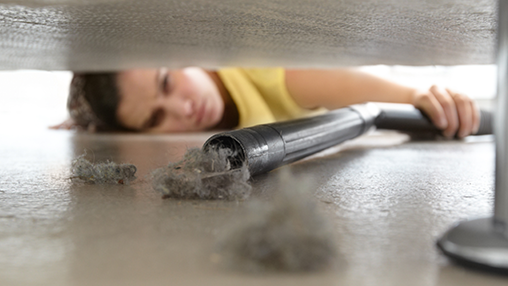-
Featured News
Home Remedies: Dealing with dust mite allergies

Trying to avoid exposure to dust mites is the best strategy for controlling dust mite allergy. But that's not always possible. While you can't completely eliminate dust mites from your home, you can significantly reduce them. Here's how:
- Use allergen-proof bed covers. Keep your mattress and pillows in dustproof or allergen-blocking covers. These covers, made of tightly woven fabric, prevent dust mites from colonizing or escaping from the mattress or pillows. Encase box springs in allergen-proof covers.
- Wash bedding weekly. Wash all sheets, blankets, pillowcases and bedcovers in hot water that is at least 130 F (54.4 C) to kill dust mites and remove allergens. If bedding can't be washed hot, put the items in the dryer for at least 15 minutes at a temperature above 130 F (54.4 C) to kill the mites. Then wash and dry the bedding to remove allergens. Freezing nonwashable items for 24 hours also can kill dust mites, but this won't remove the allergens.
- Keep humidity low. Maintain a relative humidity below 50 percent in your home. A dehumidifier or air conditioner can help keep humidity low, and a hygrometer (available at hardware stores) can measure humidity levels.
- Choose bedding wisely. Avoid bedcovers that trap dust easily and are difficult to clean frequently.
- Buy washable stuffed toys. Wash them often in hot water and dry thoroughly. Also, keep stuffed toys off beds.
- Remove dust. Use a damp or oiled mop or rag rather than dry materials to clean up dust. This prevents dust from becoming airborne and resettling.
- Vacuum regularly. Vacuuming carpeting and upholstered furniture removes surface dust — but vacuuming isn't effective at removing most dust mites and dust mite allergens. Use a vacuum cleaner with a double-layered microfilter bag or a high-efficiency particulate air (HEPA) filter to help decrease house-dust emissions from the cleaner. If your allergies are severe, stay out of the area being vacuumed while someone else does the work. Wait about two hours before going back in the vacuumed room.
- Cut clutter. If it collects dust, it also collects dust mites. Remove knickknacks, tabletop ornaments, books, magazines and newspapers from your bedroom.
- Remove carpeting and other dust mite habitats. Carpeting provides a comfortable habitat for dust mites. This is especially true if carpeting is over concrete, which holds moisture easily and provides a humid environment for mites. If possible, replace wall-to-wall bedroom carpeting with tile, wood, linoleum or vinyl flooring. Consider replacing other dust-collecting furnishings in bedrooms, such as upholstered furniture, nonwashable curtains and horizontal blinds.
- Install a high-efficiency media filter in your furnace and air conditioning unit. Look for a filter with a Minimum Efficiency Reporting Value (MERV) of 11 or 12 and leave the fan on to create a whole house air filter. Be sure to change the filter every three months.
Other therapies
- Immunotherapy. You can "train" your immune system not to be sensitive to an allergen. This is done through a series of allergy shots called immunotherapy. One to two weekly shots expose you to very small doses of the allergen, in this case, the dust mite proteins that cause the allergic reaction. The dose is gradually increased, usually during a three- to six-month period. Maintenance shots are needed every four weeks for three to five years. Immunotherapy is usually used when other simple treatments are not satisfactory.
- Nasal irrigation. You can use a neti pot or a specially designed squeeze bottle to flush thickened mucus and irritants from your sinuses with a prepared saltwater (saline) rinse. If you're preparing the saline solution yourself, use water that's contaminant-free — distilled, sterile, previously boiled and cooled, or filtered with a filter that has an absolute pore size of 1 micron or smaller. Be sure to rinse the irrigation device after each use with contaminant-free water, and leave open to air-dry.
Learn more about Allergy-proofing your home.
This article is written by Mayo Clinic staff. Find more health and medical information on mayoclinic.org.







